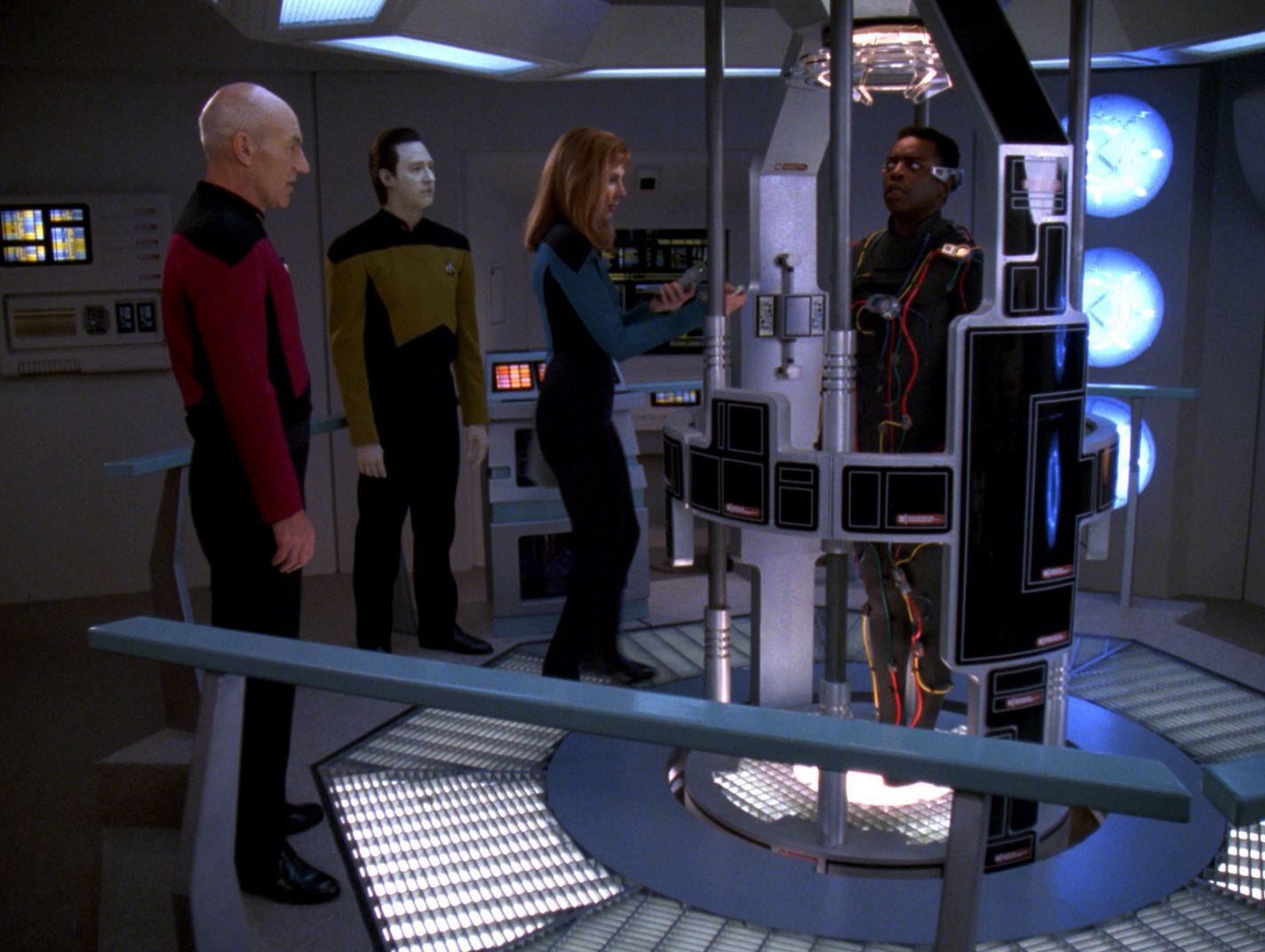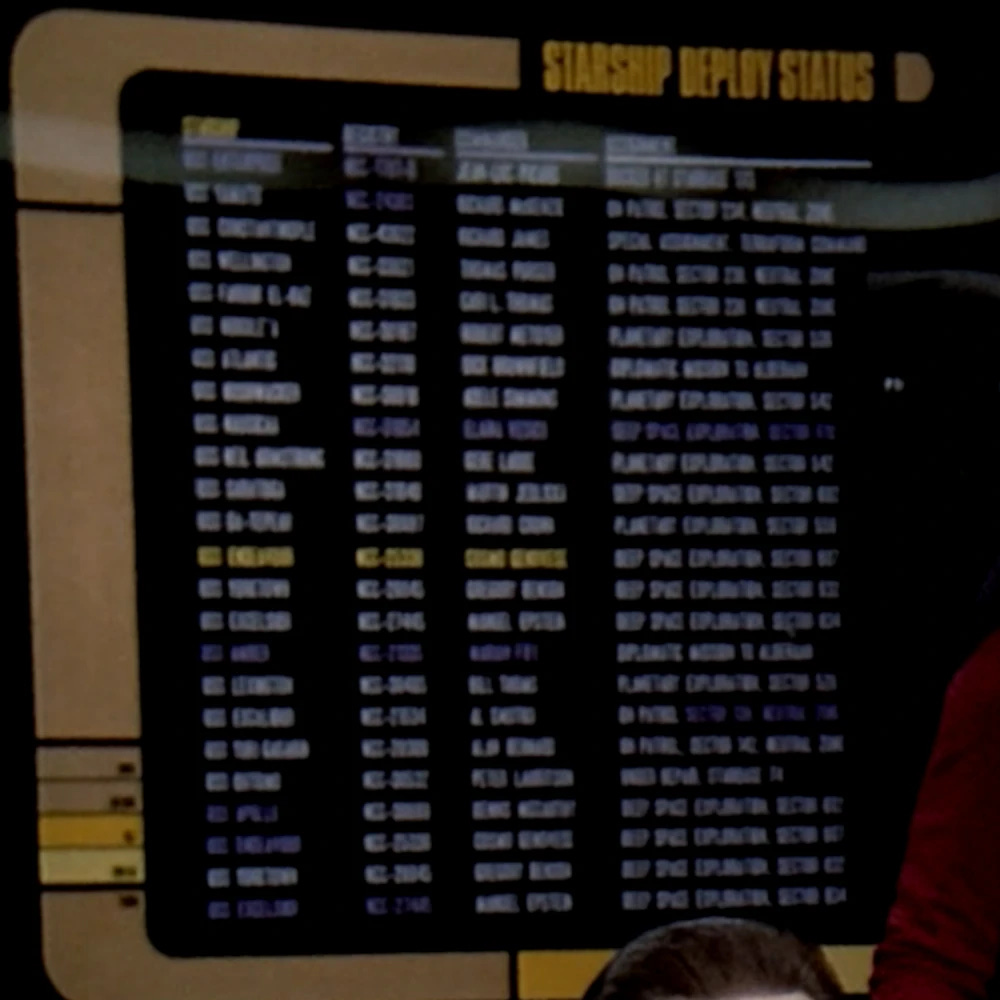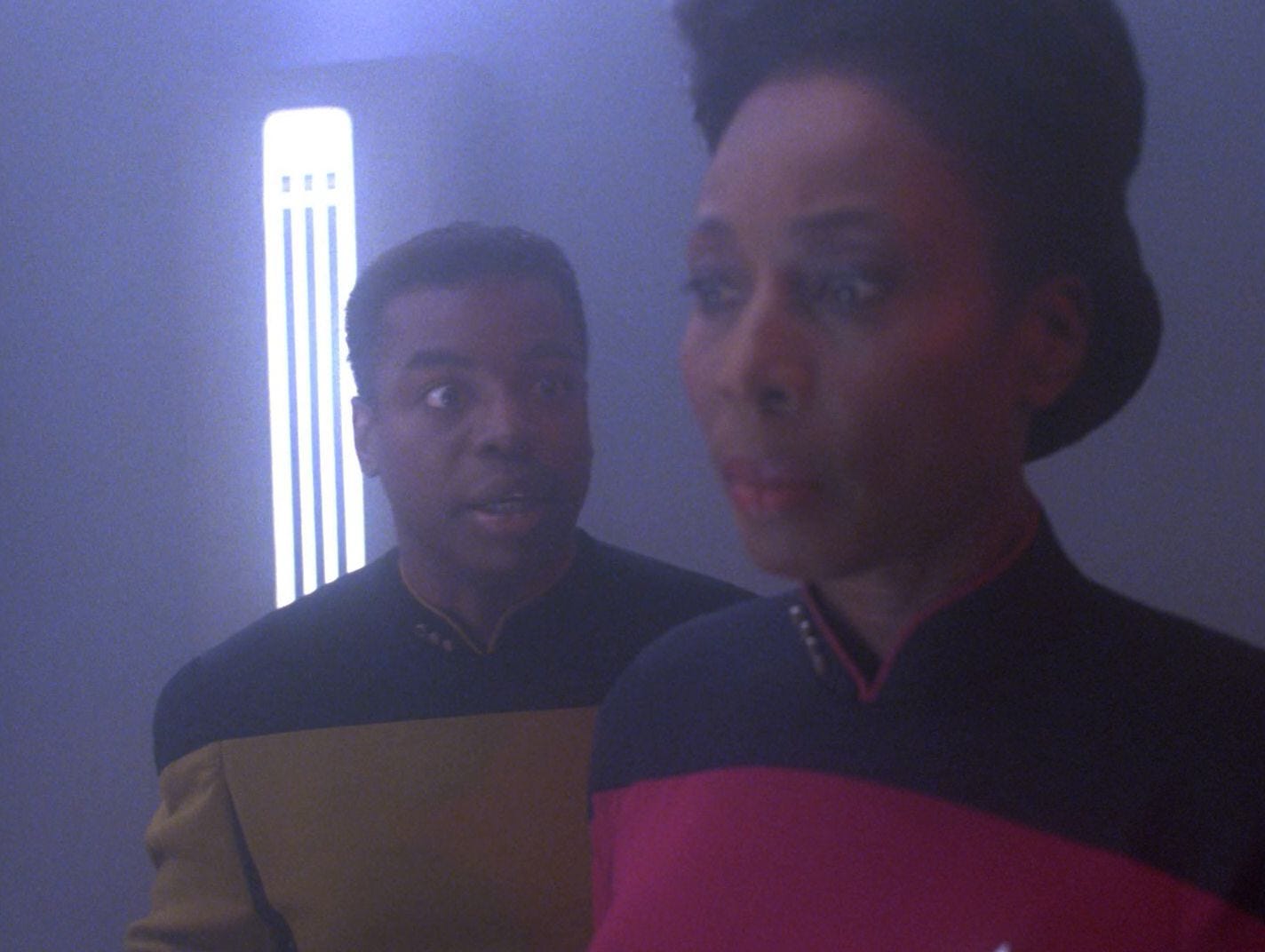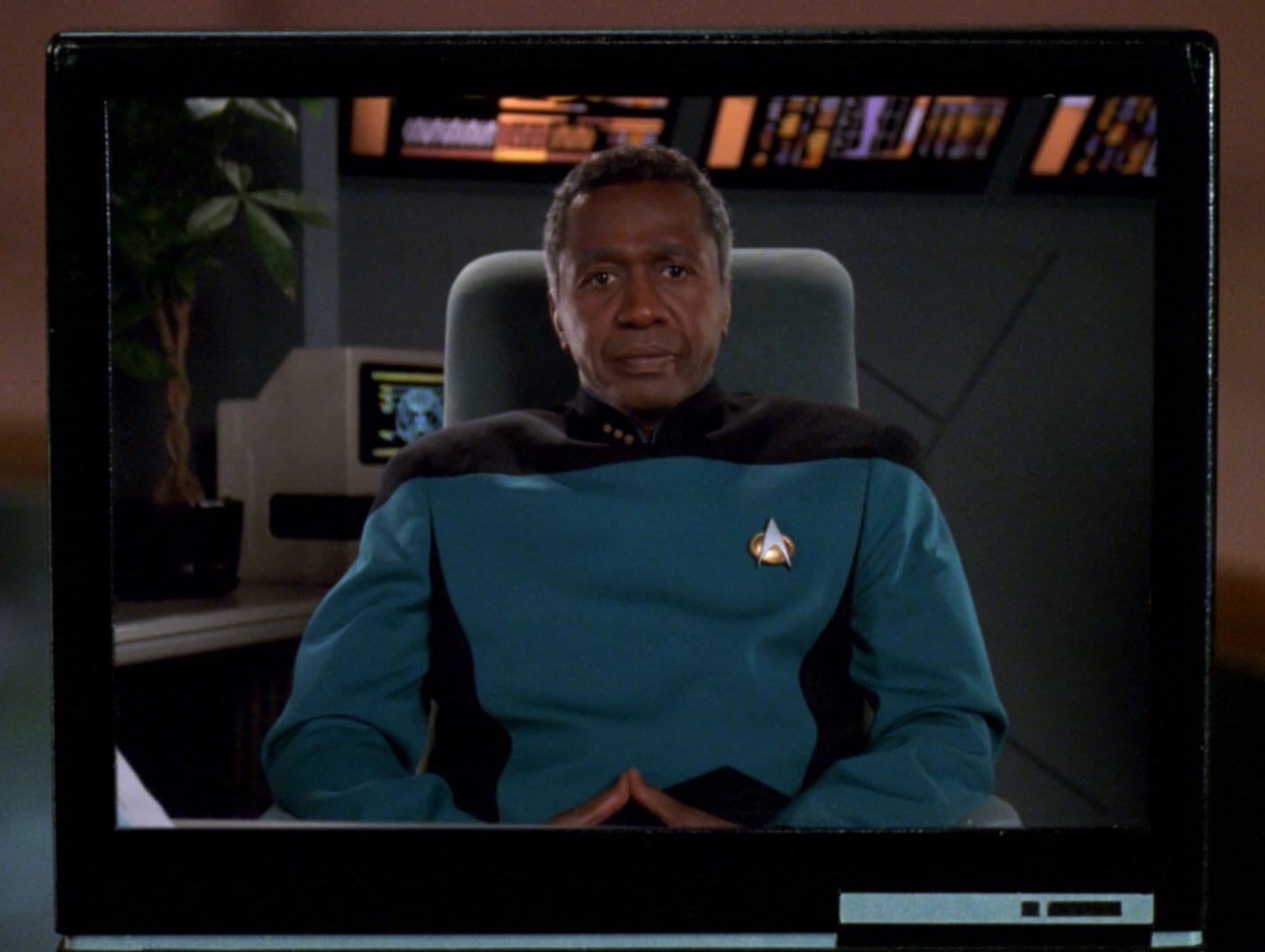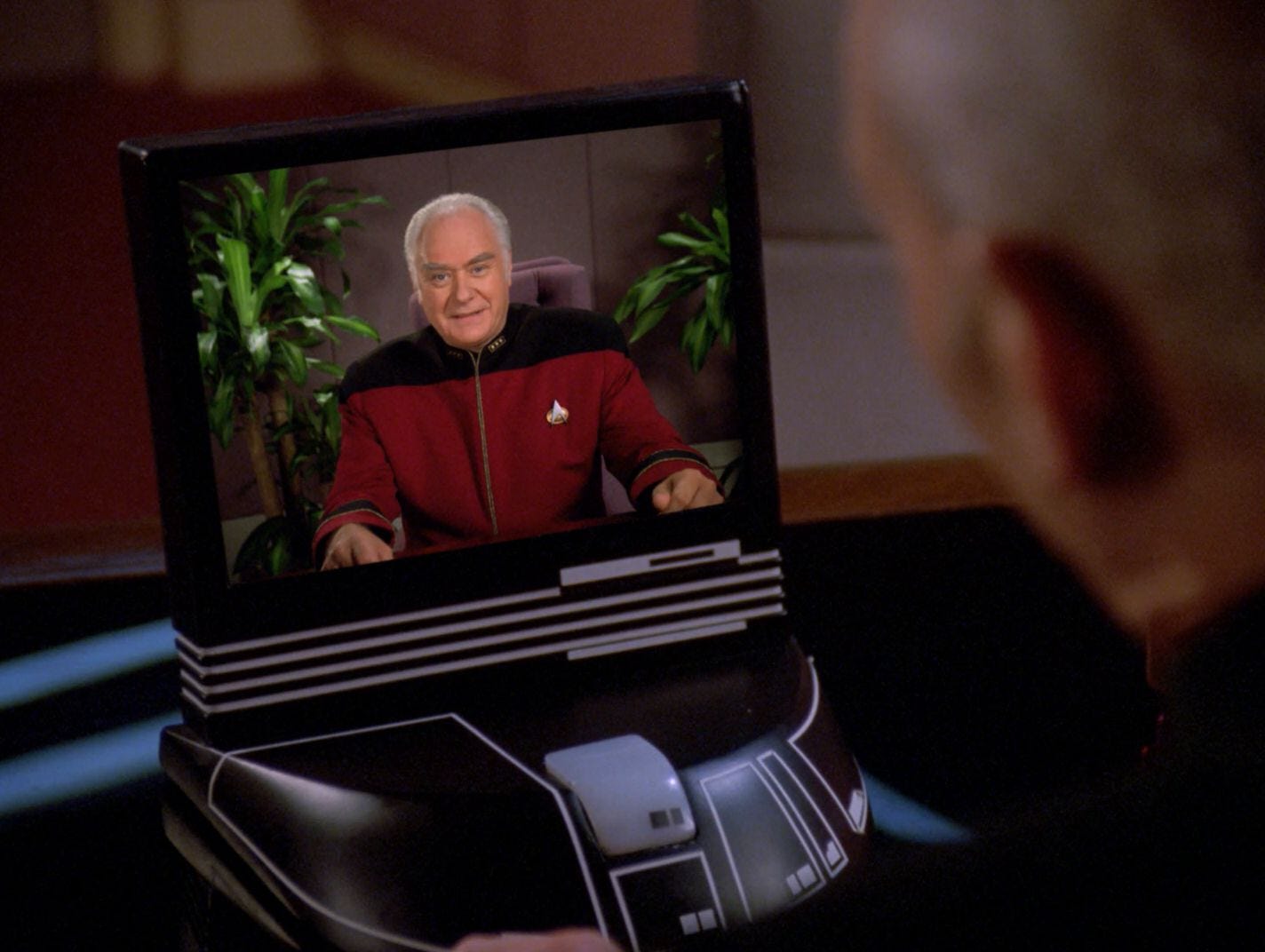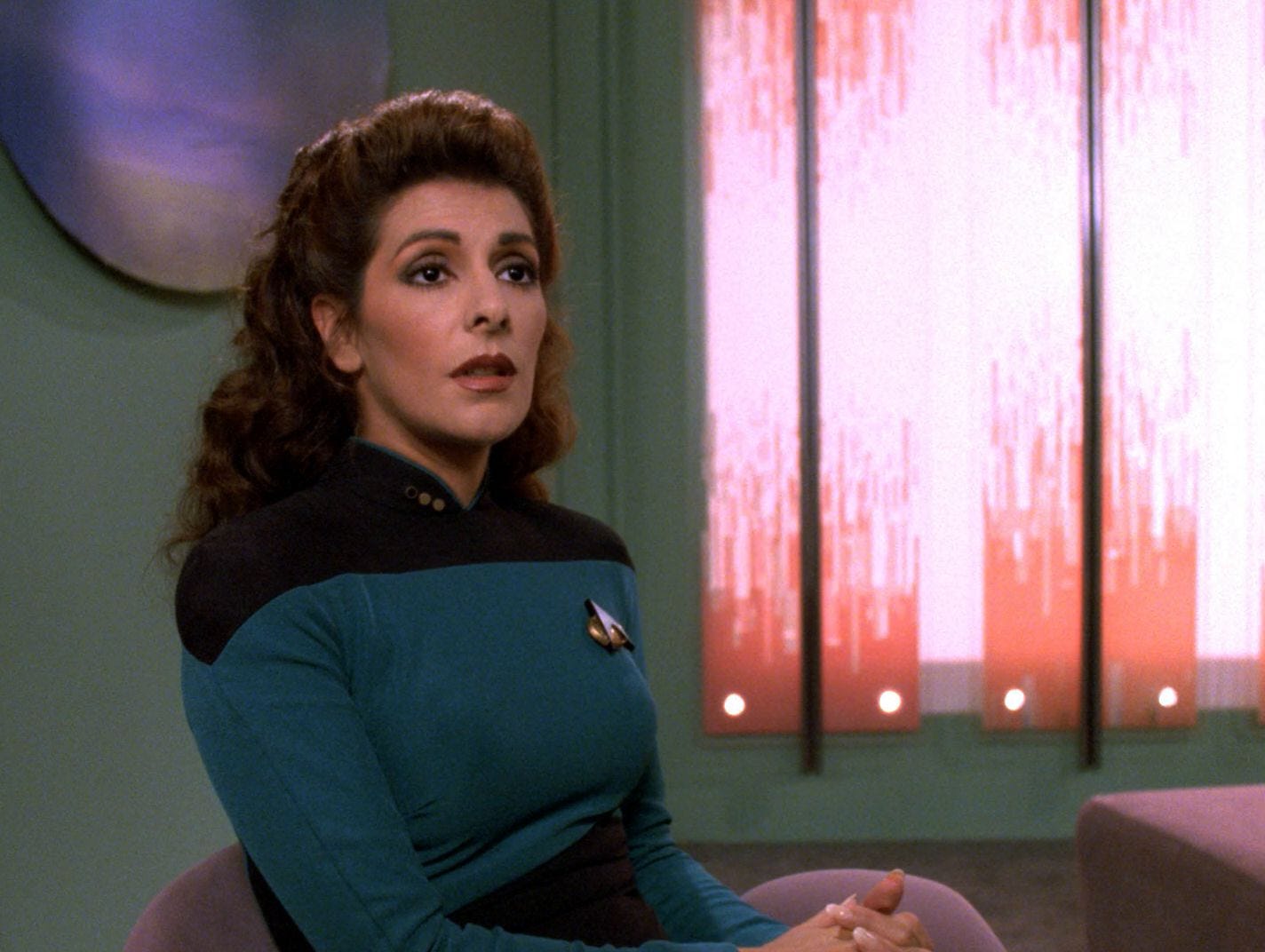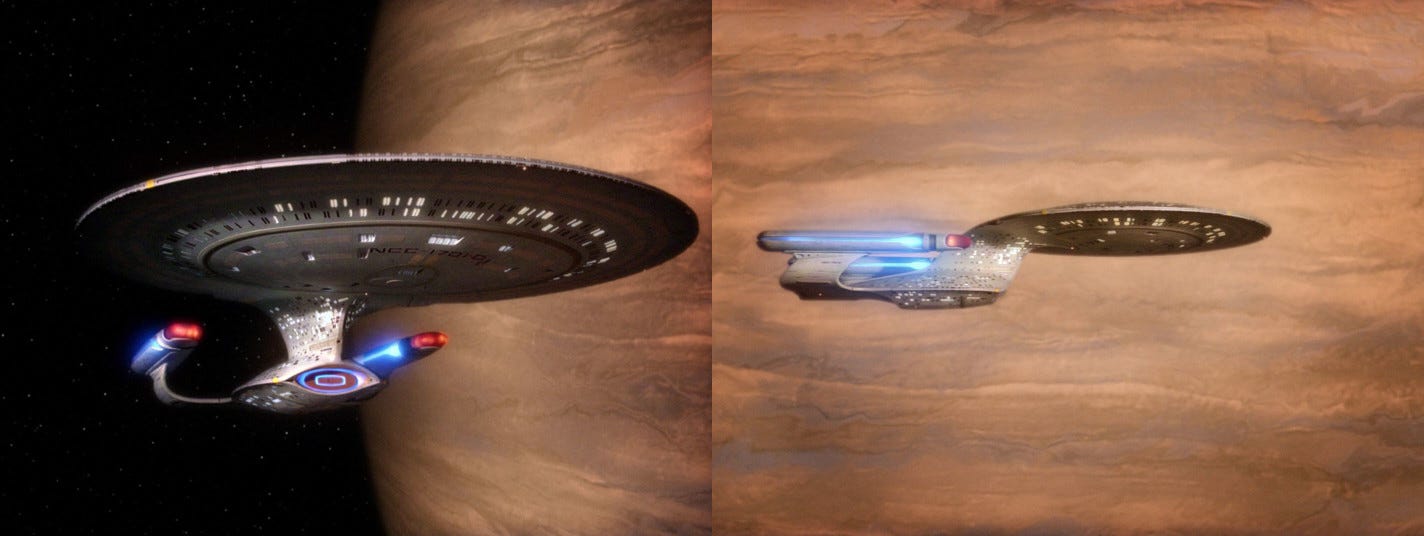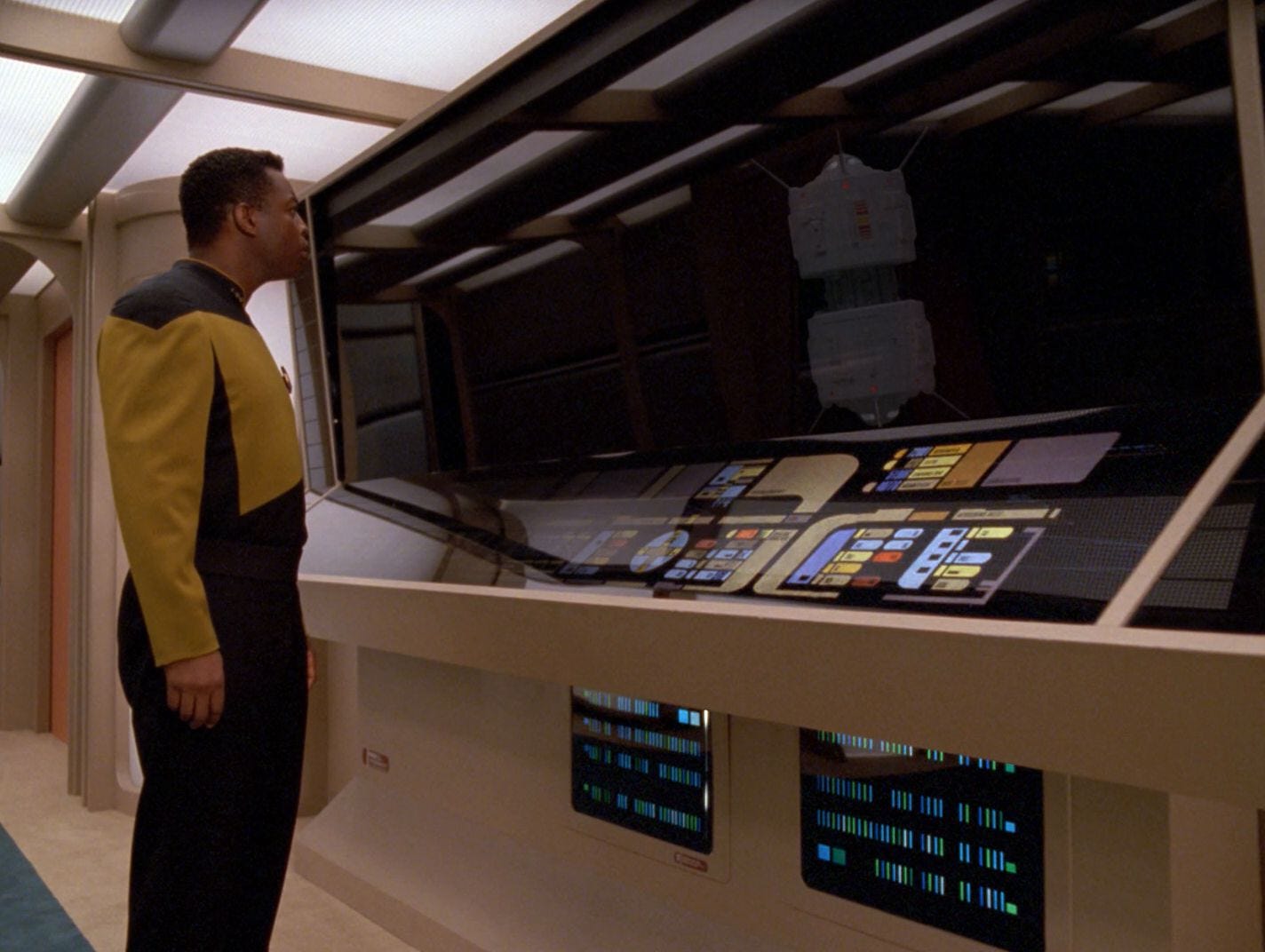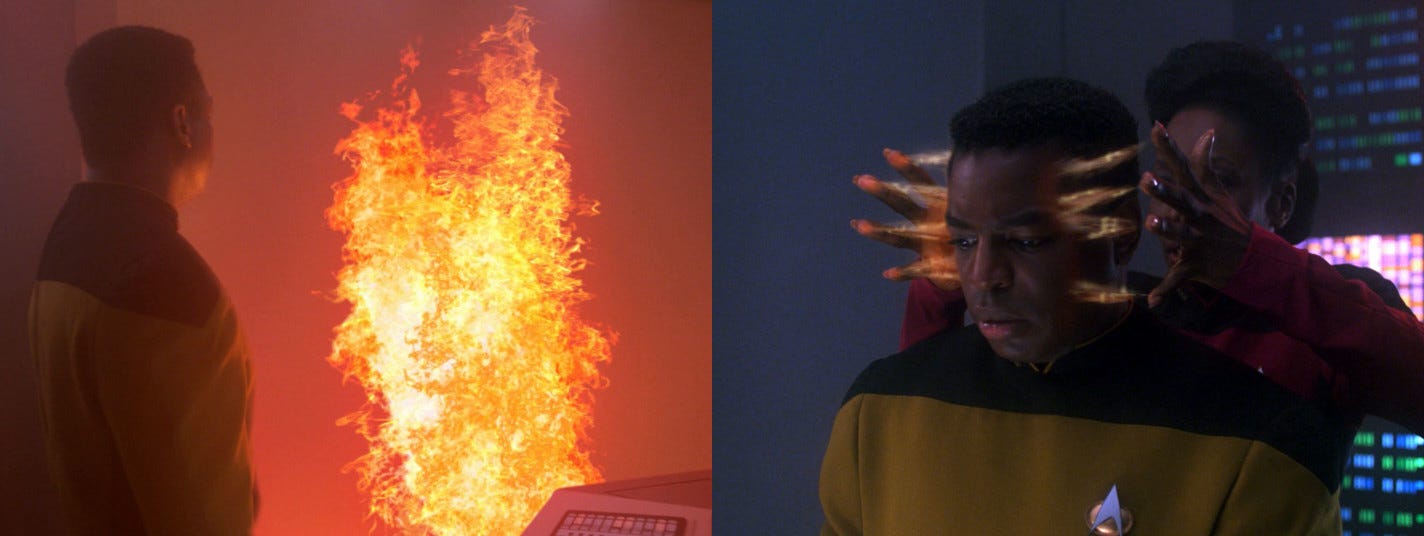Interface
LaForge has got no VISOR! And he's found his ma on a gas giant. Nothing suspicious about that...
We open on LaForge - and we can see his eyes! They're not even white or anything. Then, suspiciously, he moves through flames and heat without feeling it. We all know something's up, and it turns out he’s remotely controlling a probe. He’s exploring the USS Raman, a science ship trapped in a gas giant which is not named after a bowl of noodles but might as well be.
After LaForge discovers that the starship his mother captains has gone missing, he encounters her in the inhospitable environment on the USS noodle bowl. Yeah, right. I'll bet Captain LaForge has teleported three hundred light years and she’s magically able to survive under fatal conditions in the atmosphere of a gas giant. Ruling, Data? “Nearly impossible, Sir.” You’ll be unsurprised to learn it’s just freaky aliens messing about with LaForge’s head.
Words
Joe Menosky originally pitched this idea back in season five, although it was a significantly different story at that point. Menosky had Riker in the virtual reality, dealing with the death of his father and revisiting his Alaskan cabin. Officially, this was nixed by Michael Piller because it was too similar to what they wanted to do for the pilot episode of Deep Space Nine. However, I also suspect they didn’t want to pay to fly a location team to Alaska and thought it would look naff if all the footage was inside a set of his cabin. That said, John Wayne’s 1960 movie North of Alaska was shot in California and passed off as The Last Frontier, so anything’s possible!
Anyway, late in season six, Jeri Taylor sent a memo to Piller suggesting they bring Menosky’s concept out of mothballs for the seventh season. The focal character was switched to LaForge partly because they’d already Mindwarped Riker within an inch of his life in “Frame of Mind”, and partly because it was felt that the VISOR implants made the virtual reality kit feel more plausible. Additionally, as Taylor later put it:
We’ve had the family of everybody else on board. Every other character has had their family dealt with except Geordi and probably the main reason for doing it was there was an order to finally flesh out his character more than it had been, and to show that he didn't spring isolated from Zeus’ forehead.
So in other words, it being the final season, Taylor felt they ought to fill in all the missing jigsaw pieces from the Family season (season five). Indeed, we have more relatives of the crew coming up later in this season. But this was felt among some of the scribblers to signal that the writing was on the wall for the show. As Ronald D. Moore remembered regarding the encroaching threat of creative burnout:
I think it was a point where we were in the room and we were talking about bringing Geordi’s mother in, and we all kind of looked at each other and we were like, “This is sad. This is the best we can do? Is this the best we can do, is Geordi’s mother?” It was such a ‘who cares’ idea that we were just sort of, “Oh man… This show has got to end”.
Starship spotters will note the namecheck of Captain LaForge’s ship, the USS Hera, as well as the USS Excelsior and the USS Nobel or possible USS Noble - the former is how it's spelled in the screenplay, but the latter is how it appears on screen (the former is almost certainly correct, however, since it would likely be named after Alfred Nobel).
It seems unlikely that the Excelsior here is the same one from Star Trek III: Search for Spock, although back in “The Measure of a Man” there was an NCC 27445 in an Okudagram of deployed Federation ships, so we have the option of joining the dots there. We could also believe the original Excelsior was still in service, though, as Okudagrams occupy a kind of liminal status in terms of props: sometimes what they depict is meant to be imagined (especially with images), but sometimes we are told what to imagine (especially with text). In the case of the Okudagram in “The Measure of a Man”, it clearly wasn’t meant to lead our imaginations, as even the best capture of it is blurry: it was background detail for flavour, not a prop prescribing what we imagine. Seriously, can you read this list…?
Anyway, back to “Interface”! This episode also had critics for other reasons. Naren Shankar - the scientific advisor promoted into the writing team a few seasons back - felt the story's premise just wasn't futuristic enough:
To me, it's not real interesting from a gee-whiz standpoint of technology, because we weren't looking at technology four hundred years in the future. I think it’s more like forty years into the future. It's almost an overdone type of theme these days. The technology seems out of proportion to the other technologies that we use on the Enterprise.
Forty years from 1993 takes us to 2033. I personally don’t think we're eight years away from something like this, but if you prime your imagining glands and squint really hard you might just see Neurolink getting there. Consider me a sceptic as to what can be done via splicing nerve connections. Reading responses? Absolutely. Inserting signals? I’ll need some convincing.
Acting Roles
LeVar Burton has to carry this episode, and for once he doesn’t have to carry a hair clip over his eyes! The VISOR prop drove him crazy, and he was desperate to ditch it. As he later explained in an interview for Star Trek: First Contact, when they finally wrote out the silly device:
Eighty percent of my vision was cut off when I wore that thing, and it physically hurt, which was one of the more important reasons I wanted to get out from underneath it. We held on to it for so long, because, as Rick says, it was one of the ways that we established in the minds of the audience the technology of the twenty-fourth century.
A lot of weight in this episode is landing on the pairing between Burton and Madge Sinclair’s Captain Silva LaForge. But it doesn't quite work. The problem originates in the screenplay: in no way do we believe that this is his mother, which undermines everything that the episode is trying to set up. And since she isn’t really his mother, she has to act purposefully unconvincing, which feels like a waste.
Madge Sinclair had previously appeared with Burton in the 1977 miniseries Roots, although you're more likely to remember her as Nurse Shoop in the MASH spinoff Trapper John, MD or as Josephine in Gabriel’s Fire. She also has a long history of being cast as mothers. She was Eddie Murphy’s mother in Coming to America and continuing the long and storied relationship between TNG and L.A. Law, she appeared as Blair Underwood's mother in that legal drama, just one year before this episode. But there’s also a cool Star Trek role in her credits: she played the captain of the USS Saratoga in Star Trek IV: The Voyage Home - here she is with her moustachioed helmsman, played by Nick Ramus!
Ben Vereen's Doctor LaForge (Geordi’s dad) has a tiny role, just cropping up once on a subspace call. He was also on Roots with Burton - playing his grandson, actually. You might also have seen him in a recurring role as the father of Barney’s (adopted) older brother on How I Met Your Mother.
Also appearing solely in one scene-on-a-screen is Warren Munson as Vice Admiral Marcus Holt, who breaks the news of the missing Hera.
Neither is this his first appearance as a high ranked dignitary! He also played an Admiral in Friday the 13th Part VIII, a General in Intrepid, and an Ambassador in Executive Decision, not to mention later playing Admiral Paris on Voyager. He also had four appearances as a judge on L.A. Law prior to this episode, which doesn't qualify for the exchange programme since TNG sent nobody back to that show this week. Never mind!
Finally, note the new hairdo for Marina Sirits’ Troi!
It has softer waves and a warmer, more coppery tone. In fact, her hair changes wildly throughout this season. We may have to instantiate a ‘Troi's hair watch’ - but no promises on that front!
Models, Make-up, and Mattes
Nice to see a proper gas giant next to the Enterprise! There’s usually no excuse for it to be in orbit of a Jovian planet, after all.
But this episode slightly broke the heart of visual effects supervisor Ronald B. Moore. Despite building an elaborate probe miniature, we only see it once, and even then only in reflection.
I have to say, it doesn’t look that great in the reflection, but it seems Moore felt that this studio miniature deserved better than to be used in a Quantum Leap-style mirror shot. Oh well, at least he got to make an alien made of fire!
It’s not an amazing week for SFX, being mostly a reuse of the Enterprise-D’s corridors and Jeffries Tubes, but neither is there anything to complain about. At this end of TNG, the effects teams are really at the top of their game.





